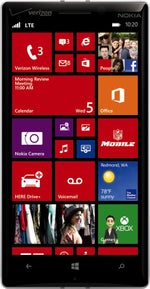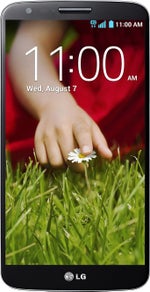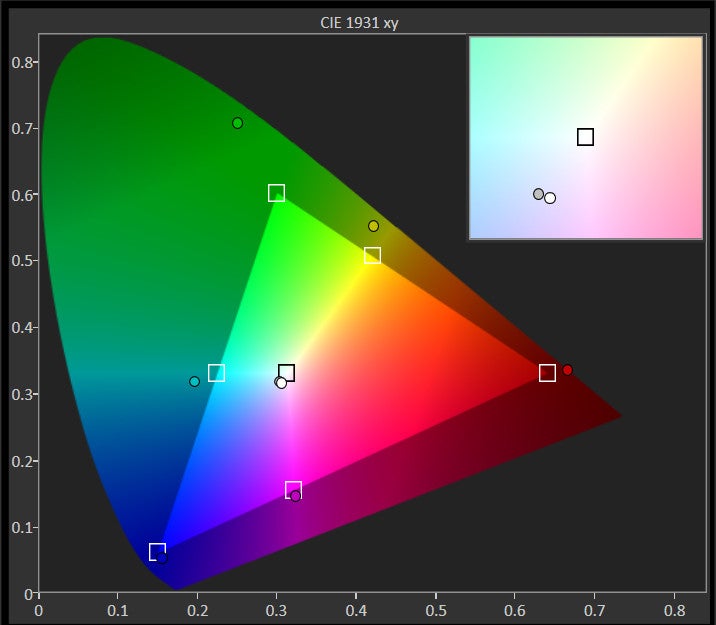Nokia Lumia Icon vs LG G2
Introduction
Proving itself to be one of the most outstanding Android smartphones launched over the past holiday season, the LG G2 isn’t one to let down a good fight, especially when it’s against a newer rival that’s looking to supplant it from the its top contender status. Nokia has been arguably busy, seeing that they’ve been proactive in releasing models that continue to graze that invisible line of cutting edge – and the Lumia Icon is true to that testament!
Microsoft is banking for the Icon to be a hit amongst the masses, as it incorporates a stellar specs sheet for a Windows Phone. Of course, it’ll need that and a whole lot more if it intends to give the LG G2 some heated and meaningful competition. When making a statement is vital in giving a certain phone notoriety over the masses, the Lumia Icon undoubtedly needs to show the LG G2 that it’s game for a good one-on-one fight. Let the games begin!
Design
Plastic is certainly the choice material with the construction of both handsets, but the predominantly polycarbonate body of the Lumia Icon exudes a more potent level of sturdiness than the glossier and slick plastic frame of its rival. As much as we appreciate the thinner and lighter body of LG’s flagship, it doesn’t quite have the same impact with its construction – so it tends to come off slightly hollow. At the same time, the matte finish of the Lumia Icon is better able to deal with fingerprints and smudges, so it maintains a cleaner look.
Although it’s more of an accent, the metal trim hugging the sides of the Icon sprinkles on a hint of premium to its design. However, as a result of that, the Lumia Icon feels sharp around the edges, which makes it uncomfortable to hold over a period of time. In comparison, the curvier design of the G2 makes it super easy to grasp – plus, its more ergonomic design makes it pleasant to handle.
By now, we’ve gotten used to the untraditional placement of the power button and volume controls with the LG G2, but new users will need to adjust before appreciating LG’s logic behind it. Then again, we can’t complain about the set on the Lumia Icon, as they’re in locations we’re normally accustomed to seeing them in – plus, it’s nice we have a shutter key to quickly to mimic that real camera shooting experience.
They own several microphones around their bodies, as well as a microUSB port for charging and data connectivity, but the LG G2 goes one step by offering us video-out functionality via the microUSB port, an IR blaster to make it double as a universal remote, and a multi-color LED notification light.
Display
In wooing our eyes, there is no shortage of eye candy exhibited by the two displays. On one side, we have the 5-inch 1080p ClearBlack AMOLED display in the Lumia Icon, which is noteworthy for being the most detailed display in a Windows Phone to date. In comparison, the LG G2 is equally as delicious with its slightly larger 5.2-inch 1080p IPS LCD panel. Both are very sharp and although the Icon has slightly more PPI, the LG G2 is equally detailed. For the OLED display of the Lumia Icon, it stands out for its vibrant colors and wide viewing angles – the hallmarks of nearly every OLED based panel we’ve come across. However, it can’t match the color accuracy and potent outdoor visibility of the IPS LCD based panel of the LG G2. Some will favor the Lumia Icon for the sheer wow factor it brings to a room, but we can’t forget about the other highlighting attributes of the G2. Therefore, if iridescent colors are more your forte, you’ll like the look of the Icon’s display. If not, you might take fancy in the G2’s display instead.
Interface and Functionality
Let’s cut to the chase folks, seeing that we’ve compared these two platforms in great detail with past comparisons. Quite simply, the customized Android 4.2.2 Jelly Bean experience of the LG G2 has an eclectic arsenal of features that puts the Windows Phone 8 experience of the Nokia Lumia Icon into its place. There’s no comparison, seeing that it’s rich with totality from head-to-toe. Power users will undoubtedly be pleased by the G2! Well, it’s still okay with the Lumia Icon, even more if you’re willing to experiment with Microsoft’s budding mobile platform, but it’s still only offering a small fraction of the things we can get out of the G2.
For starters, notifications continue to be better incorporated with the customized Android experience of the G2, since its notifications panel offers us several secondary features – while also being accessed to other connectivity features. As for the Lumia Icon, its dynamic live tiles handle all of the notifications, which can be a messy process when trying to track down each and every notification.
In addition, multi-tasking is on steroids with the G2. Not only can its select QSlide apps be layered on top of whatever we’re doing, giving us miniaturized versions of their full-sized counterparts, but the G2’s SlideAside feature becomes especially useful in organizing up to three apps simultaneously. Conversely, the Lumia Icon’s implementation is more like task switching – as opposed to true multi-tasking.
Beyond the baseline functions of each experience, we know that the G2 benefits from having a deeper selection of quality apps – that’s essentially due to Android’s longer development. In contrast, Windows Phone 8 still doesn’t have the same breadth of apps as its rival, but nonetheless, it continues to grow with a diversified portfolio.
Out of the box, there’s not one that has more of an encompassing set of productivity features. Sure, we absolutely appreciate that we get the full Microsoft Office experience out of the Lumia Icon, but the G2 is preloaded with Polaris Office 5 to give us something similar.
Visual presentation is more appealing with Windows Phone 8, seeing that it shines with its animated approach. Well, we see some of that too with the customized Android experience of the G2, but it still has a conventional approach. Despite that, we can’t forget to mention how the G2 is stacked to the roof with an impressive features set with its experience – like its note-taking apps, multi-tasking prowess, and much more. In the end, it’s plainly evident that Windows Phone 8 has its limitations, more so when it’s stacked against the G2’s offering.
Processor and Memory
For a good while there, Windows Phones seemed to be dated because of the last-generation processors they utilized. Fortunately for the new crop of Windows Phones, which includes the Lumia Icon, they’ve been outfitted with the same high-end gear bestowed on many of its Android counterparts. In fact, the Lumia Icon and LG G2 share the same piece of silicon – a quad-core 2.2GHz Qualcomm Snapdragon 800 SoC coupled with 2GB of RAM and the Adreno 330 GPU. There’s no shortage of speed and finesse when it comes to their performance, as every operation is accompanied with a tight response. Despite exuding nearly the same buttery smooth operations, there’s just a smidgen more snappiness exhibited by the G2’s performance – though, most people wouldn’t be too inclined to notice the difference.
Thankfully there’s some room for flexibility when it comes to storage, as they both are stuffed with an ample 32GB of space.
Internet and Connectivity
All of the delightful qualities are present here to make surfing the web such a pleasure. Specifically, they feature speedy 4G LTE speeds for quick page loads, instant page rendering, and buttery navigational controls. Even though the LG G2 has the larger display, we wouldn’t necessarily say that it poses as an advantage.
Camera
Cameras are in full force with these titans, ensuring photogs that they’ll have something to look forward to using. Specifically, it’s a 20-megapixel PureView camera in the Lumia Icon, which features an extraordinary large 1/2.5” sensor, ZEISS optics, wide-angle f2.4 aperture lens, dual-LED flash, optical image stabilization, and 1080p video recording in 24, 25, and 30 FPS. Meanwhile, the LG G2 isn’t a slouch either, seeing that it’s outfitted with an equally mighty 13-megapixel camera that features an f2.4 aperture lens, optical image stabilization, single LED flash, and a unique 1080p video recording mode in 60FPS.
Showing off its diversity, the G2’s camera app is filled to the brim with an exhaustive set of shooting modes – while still dishing up some manual controls into the mix as well. In contrast, the Lumia Icon’s camera app is known for its precise controls as well, but we need to resort to using separate apps, or other ‘lenses’, in order to cast various filters or effects into our shots. Then again, we really appreciate how we’re offered manual focus with the Lumia Icon, which is a rarity in itself amongst smartphones.
The battle between these two cameras is epic no doubt, but when the dust settles, the defining characteristic that seals the win for the Lumia Icon is its ability to capture the finder details. Don’t be fooled by the LG G2 either, just because it’s fully capable of matching the Icon’s results – especially when it comes to outdoor sunny conditions. In fact, they both deliver excellent details, vibrant color tones, and properly exposed shots. Despite the similarities, the higher resolution 19-megapixel samples of the Lumia Icon is able to meticulously snap the finer details from the scenery.
Continuing to challenge one another, we’re happy to report that they excel under low lighting situations too. Looking deep into our shots, we notice that the LG G2’s snapshots are slightly brighter – at the expense of having softer toned details. Meanwhile, the Lumia Icon does a fantastic job as well to draw out details, but its longer exposure causes fast moving objects to blur. It’s not a problem when it’s a static shot, though, it becomes a peculiar issue when there are a lot of moving things in the scenery. In combating their softer details under low light, their respective LED flashes cast the same potent lighting to brighten up the scenery.
Indeed, it’s a close call with still image quality, with the slight overall advantage to the Lumia Icon, but when it comes to shooting 1080p videos, it’s the G2 that gets it done in the right way. Not only are we attracted to its super smooth 60 FPS capture rate, but it’s able to snag the sharper and clearer looking details. In fact, it’s very apparent when compared to the subdued visuals put out by the Lumia Icon. Ultimately, we gravitate more towards the G2 in this particular category.
Multimedia
Running their respective music players, we’ll admit that they both shine with their presentations. Windows Phone 8’s Modern UI extends into the stock music app, as the hub has a subtle dynamic look with its presentation value. As an alternative, there’s also the Nokia Music MixRadio app, which also lays claim to a very pretty looking interface. Oppositely, the stock music app of the G2 has a neat function in the way it can populate YouTube videos related to the song that’s being played.
Okay, so these two handsets effortlessly handles all sorts of 1080p videos – while also laying claim to supporting various codecs out of the box. Even though the LG G2 has the larger sized screen, it really doesn’t have much of a bearing considering that it’s barely larger. Nevertheless, we appreciate how the LG G2 can minimize a video we’re watching, which can then be layered over anything to provide us with better multi-tasking.
Call Quality
It’s a clear win for the Lumia Icon when it comes to call quality! Excellent is the word that describes its quality, as voices on both ends of the line are robust and noise-free – and it also helps that its earpiece and speakerphone are unbelievably loud! Indeed, we’re able to carry out conversations with the LG G2, but the microphone has a habit of casting an unclear tone with our voice, so the end result is a little bit of distortion.
Battery
LG has managed to stuff the G2 with a 3000 mAh battery, which is higher than the 2420 mAh one inside of the Lumia Icon. As a result, LG’s pride and joy delivers the better battery life between the two. Using our battery benchmark test, it pulls out 6 hours, 48 minutes from a full charge, besting the 4 hours, 50 minute tally of the Lumia Icon.
Conclusion
Pricing, it’s something that has a dramatic effect on a buyer’s decision. If we’re to look at Verizon’s current pricing structure for the two high-end smartphones, it points to the obvious – that the LG G2 by far has the greater bang for the buck value! Whether it’s the on-contract or outright pricing, there’s a considerable amount of savings that accompany the pickup of the LG G2. Specifically, it’s $100 on-contract or $500 outright, which looks more pleasing than the $200 on-contract or $550 outright cost attached to the Lumia Icon.
Of course, being the newer device means that there’s always going to be a higher premium to it. We’re not saying to strictly go with the LG G2 due to the savings you’ll get out of it, but rather, it’s more of whether you’ll be able to appreciate what Windows Phone 8 has to offer in the experience department. Sure, there are more features in play with the LG G2, both from the hardware and software, but the Lumia Icon can’t be undermined for the simple reason that it’s more expensive. Windows Phone isn’t for everybody, but if you feel up to the task of going on the Windows Phone ride, the Lumia Icon won’t disappoint – it’s the best that Verizon has to offer at the moment.


























Things that are NOT allowed: